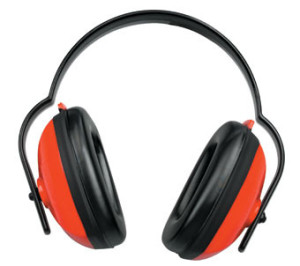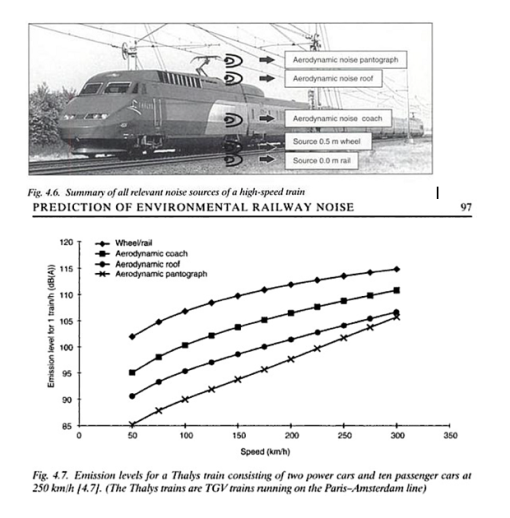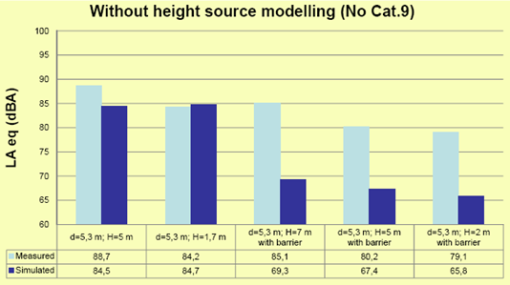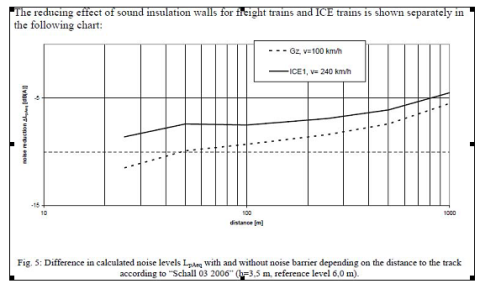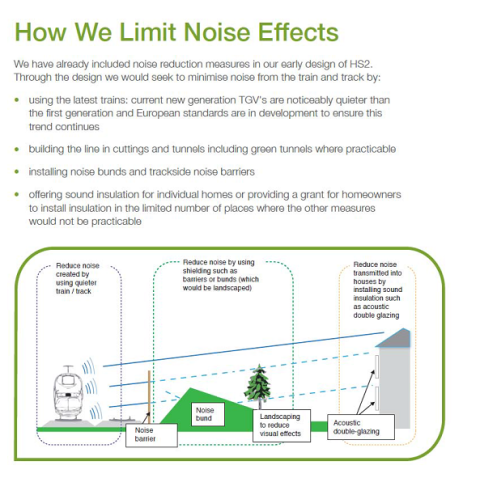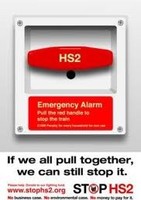NOISE
ABOVE: Giles Parker, Managing Director of Sound Barrier Solutions, who shares the BSI committee for noise barrier design in the UK and leads the European delegation for noise barriers for Europe suspects that HS2 Ltd's mitigation plans are not as good as they should be and talks about how difficult it would be to deal with the noise intrusion of 225mph HS2 trains. Giles says that UK sound barrier technology is woefully behind that of Europe and says that HS2 should really be tunneled to avoid the noise impact. Broadcast on BBC Three Counties Radio, July 11th 2012.
LEFT: The Health and Safety Executive recommends that ear protection is worn by individuals with sustained exposure to noise above 85dB. (The threshold in many other European countries is lower than 85dB). HS2 trains within 25m of the track would cause noise at least 95dB (this has been admitted by HS2 Ltd through a Freedom of Information Act request), and since they intend to run up to 30 trains per hour (at peak times) and each train is 400m long the noise would be pretty much continuous. It would also affect every single commuter and passenger who gets on or alights from the tube daily at North Acton, Hanger Lane, Perivale, Greenford and Northolt tube stations.
LINKS TO A SERIES OF BLOGS EXPLAINING HOW HS2 LTD'S APPRAISAL OF THE NOISE IMPACT OF HS2 IS WOEFULLY INADEQUATE:
This is explained in a series of 5 succinct and jargon free blogs, suitable for those of us who don't have degrees in Acoustics or Sound Technology to understand:
1. Not quite measuring up at http://hs2andtheenvironment.wordpress.com/2012/10/14/not-quite-measuring-up
2. How annoying is that? at http://hs2andtheenvironment.wordpress.com/2012/10/18/how-annoying-is-that
3. The challenge of the peaks at http://hs2andtheenvironment.wordpress.com/2012/10/22/the-challenge-of-the-peaks
4. A summit that is far too high at http://hs2andtheenvironment.wordpress.com/2012/10/26/a-summit-that-is-far-too-high
5. And, by the way, there’s also … at http://hs2andtheenvironment.wordpress.com/2012/10/30/and-by-the-way-theres-also
NOISE SOURCES
From the above reference:
'It should be clear that knowledge of the sound power level of the noise sources that can be distinguished is essential. The physical height of a noise source above the track and above ground level is essential for calculation of the acoustic propagation from source to receiver. A higher noise source, for example, will give less attenuation due to the acoustic absorption of the ground. Also after the erecting of a noise barrier, the higher noise sources will not be screened, or will be less screened, than lower noise sources’.
Despite the fact that the trains will be about 5m high and there are significant noise sources above ground level at 250kph, in their London to West Midlands 'Appraisal of Sustainability', HS2 Ltd only measured noise from a level of zero metres!
- The dark blue columns show the predicted effect of noise barriers using a single low source of 0 metres - just as HS2 Ltd have done.
- The light blue columns show the measured results from Eurostar trains.
Results: By not using various source heights the result is to overestimate noise barrier effectiveness by 12.8 to 15.8 decibels.
INEFFECTIVENESS OF 'NOISE BARRIERS'
ABOVE:
- The bold line represents German high speed trains. The vertical axis illustrates the effectiveness of noise barriers at 240 kph. HS2 trains will be going even faster through North Ealing – at 250kph. The horizontal axis is the distance from the trains.
- The barrier effectiveness is a reduction of only -7 or -8 decibelsat close range (within 500m). This finding confirms many other studies that 2m high noise barriers are not very effective against high speed train noise:
This chart shows that:
- The reducing effect of sound insulation walls is significantly higher for freight trains compared to high speed ICE trains. This effect can essentially be put down to the reduced effectiveness of noise barriers against high positioned noise sources such as pantographs.
- Noise from upper parts of high speed trains begin to contribute to overall noise from just 200kmh.
It is also known that:
- These noise sources are separate and independent from wheels and tracks. HS2 Ltd's noise advisors participated in a European Commission programme which demonstrates this.
- Total train noise should be modelled at various source heights to more accurately reflect the contributions from different parts of trains. In fact HS2 Ltd's noise advisors advised the European Commission on using different heights for train noise - advice not used for HS2.
- Noise barriers are less effective at reducing noise from high speed trains because of the height of some noise sources. This is an unavoidable fact acknowledged in HS2 Ltd's Appraisal of Sustainability – but not evident in the results. In fact not only are noise barriers less effective in the real world, it can be demonstrated how their effectiveness can be grossly overstated in computer models – by using wrong noise height.
INEFFECTIVENESS OF HS2 LTD's CURRENT MITIGATION PROPOSALS
In Perivale, Greenford and Northolt there are:
• NO CUTTINGS
• NO GREEN TUNNEL
• NO DEEP TUNNEL
• NO NOISE BUNDS
• A RAISED AND EXPOSED EMBANKMENT (Greenford and Perivale)
So this just leaves noise barriers, sound insulation and landscaping for residents in North Ealing - THIS IS WHOLLY INADEQUATE AND UNACCEPTABLE


